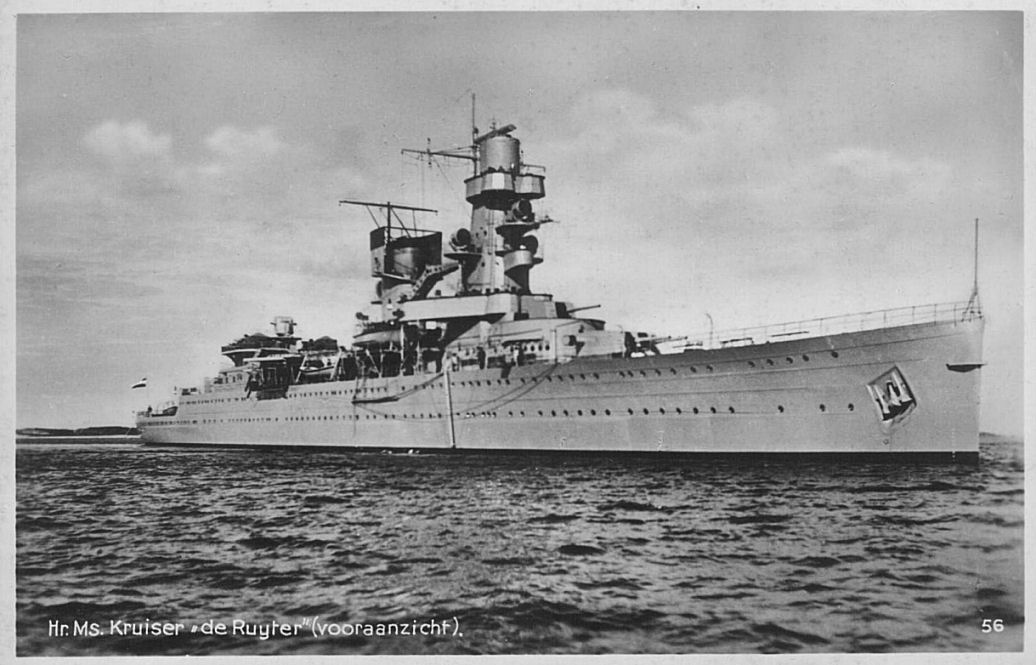VIDEOS:
Colonial Dutch Army 1939 - in color
http://uk.youtube.com/watch?v=YQsftmLO6Lk
Features: Governor General Jhr. Mr. A.W.L. van Starkenborgh Stachouwer (formally Commander-in-Chief of the NEI Armed Forces) and his wife, Stadswacht Batavia - Townwatch Batavia (modern day Jakarta) similar to home guard or militia unit, armored cars, Brewster Buffalo fighter planes of the NEI air force, and Dutch naval ships on maneuvers.
Original Title: Coveted East Indies
Director: Deane Dickason
Editor: Falkonungu (2007)
Production date: ca. 1938-39
This film appears MOS, but originally had sound and was produced and narrated by the radio world travel radio commentator Deane Dickason. Interesting silent portrait of cultural life in the East Indies during Dutch colonialism.
PA8530 Coveted East Indies, The 16mm Koda travelogue, 2 reels, ca. 1938-39
This item is part of the collection: Prelinger Archives
Colonial Dutch-Indies (1938-39 in colour) [Part 1 of 4]
http://uk.youtube.com/watch?v=pWFeVQoVy1s
Colonial Dutch-Indies (1938-39 in colour) [Part 2 of 4]
http://uk.youtube.com/watch?v=fqENNzU5lLw
Colonial Dutch-Indies (1938-39 in colour) [Part 3 of 4]
http://uk.youtube.com/watch?v=jl1pJssdpu0
Colonial Dutch-Indies (1938-39 in colour) [Part 4 of 4]
http://uk.youtube.com/watch?v=luMGXq2mrY8
Original Title: Coveted East Indies
Director: Deane Dickason
Production date: ca. 1938-39
A public-domain footage I found on www.archive.org - thought better share it here!
These are scenes from the latter years of Dutch colonialism in Indonesia - and it appears much of the footage has been shot around 1938-39.
Some interesting scenes of Menteng.
The footage is full of street scenes, colonial lifestyles and ‘orientalist’ landscapes.
http://www.archive.org/details/coveted_east_indies_1
This film appears MOS, but originally had sound and was produced and narrated by the radio world travel radio commentator Deane Dickason. Interesting silent portrait of cultural life in the East Indies during Dutch colonialism.
PA8530 Coveted East Indies, The 16mm Koda travelogue, 2 reels, ca. 1938-39
This item is part of the collection: Prelinger Archives
Producer: Deane Dickason
Audio/Visual: Si, color
BATAVIA 1939
http://uk.youtube.com/watch?v=1syhnagy2iE
Original Title: Coveted East Indies
Director: Deane Dickason
Editor: Falkonungu (2007)
Production date: ca. 1938-39
Interesting color portrait of BATAVIA in the East Indies during Dutch colonialism.
PA8530 Coveted East Indies, The 16mm Koda travelogue, 2 reels, ca. 1938-39
This item is part of the collection: Prelinger Archives.
The Fall of Java Island, March 1942 Dutch East Indies
http://uk.youtube.com/watch?v=qlT2UTsDgkg
Koninklijk Nederlandsch Indisch Leger KNIL
http://uk.youtube.com/watch?v=Qu9YspavVXw
7 December Divisie Nederlands Indie
http://uk.youtube.com/watch?v=bA9qrB5ygJo
1e divisie 7 december Nederlands Indie
Filmbeelden van de Nederlandse inzet in Nederlands Indie 1946-1950
1e Politionele Actie Nederlands Indie 1947
http://uk.youtube.com/watch?v=u5-APHxW7-E
De zaak-Aernout (wapensmokkel en moord in Nederlands-Indië)
http://uk.youtube.com/watch?v=W7NxCttKnsg
Indonesia 1940 pre war oud Indië.KNIL.
http://uk.youtube.com/watch?v=eBSeAFLw9jY
Kurkdjian Come to Java 1922-23 Dutch East Indies Photography
http://uk.youtube.com/watch?v=UvAuQs8EDPs
Old Jakarta 1919
http://uk.youtube.com/watch?v=tKQcVyAlKSE
City was known as Batavia in those days.
1652 Van Riebeeck
http://uk.youtube.com/watch?v=0cZehTAy-E0
1652 - Jan van Riebeeck stig 'n verversingspos aan die Kaap
Johan Anthoniszoon “Jan” van Riebeeck (21 April 1619–18 January 1677), was a Dutch colonial administrator and founder of Cape Town. He was born in Culemborg in the Netherlands as the son of a surgeon. He grew up in Schiedam, where he married Maria Cotze on 28 March 1649. (She died in Malacca, now part of Malaysia, on 2 November 1664, at the age of 35). The couple had eight sons, one of whom, Abraham van Riebeeck, would become a Governor-General of Dutch East Indies.
Joining the Dutch East India Company (VOC) in 1639, he served in a number of posts, including that of an assistant surgeon in the Batavia in the East Indies. He subsequently visited Japan. His most important position was that of head of the VOC trading post in Tonkin, Vietnam. However, he was called back from this post as it was discovered that he was conducting trade for his own account.
In 1651 he was requested to undertake the command of the initial Dutch settlement in the future South Africa. He landed three ships Drommedaris, Reijger and Goede Hoop at the future Cape Town on 6 April 1652 and fortified the site as a way-station for the VOC trade route between the Netherlands and the East Indies.
Van Riebeeck was Commander of the Cape from 1652 to 1662; he was charged with building a fort, with improving the natural anchorage at Table Bay, planting fruit and vegetables and obtaining livestock from the indigenous Khoi people. In the Kirstenbosch Botanical Gardens in Cape Town there is a wild almond hedge still surviving that was planted on his orders as a barrier. The initial fort was made of mud, clay and timber, and had four corners or bastions. This first fort should not be confused with the present-day Cape Town Castle. The Castle, built between 1666 and 1679, several years after Van Riebeeck’s departure, has five bastions and is made of brick, stone and cement.
Van Riebeeck reported the first comet discovered from South Africa, C/1652 Y1, which was spotted on December 17, 1652.
He died in Batavia (now renamed Jakarta) on the island of Java in 1677.
(Source: Wikipedia)
Belofte maakt schuld Deel 1
http://uk.youtube.com/watch?v=mjYCgTyBmoQ
Waarom Huil Je Toch Nona Manis
http://uk.youtube.com/watch?v=dx8tCcK-_W0
Performed by Rudi van Dalm and his Raindrops.
Old song from the Dutch East Indies - my mom used to like this song.
Other variations:
http://uk.youtube.com/watch?v=lqIn_YOIgHY
http://uk.youtube.com/watch?v=hasw0EJSbwk
http://uk.youtube.com/watch?v=-b2cZHixLvU
http://uk.youtube.com/watch?v=uMUMHqOYqL0
Manise, Manise
http://uk.youtube.com/watch?v=PTwWciAfQQc
Another old song from the Dutch East Indies.
Other variations:
http://uk.youtube.com/watch?v=nkYWJNP1BAo
http://uk.youtube.com/watch?v=kLXc2RYCZFk




